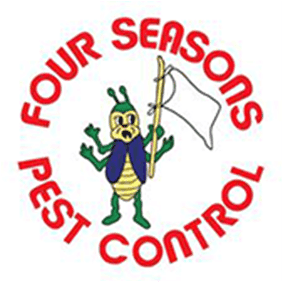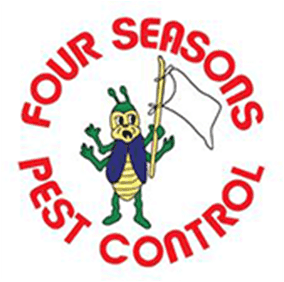Occasional invaders are some of the most elusive pests to treat, especially when they get inside your home. Four Seasons Pest Control technicians can identify problem areas for each type of insect and provide a plan, including treatment, for their eradication. The following pests are common in our area.
Earwig
Appearance: Dark brown; about 1 inch long, with forceps-like pincers extending from backside.
Habitat
Earwigs live outdoors together in tree holes, under piles of lawn debris and mulch and under objects lying on the ground. They also live in exterior cracks of buildings, from which they may wander inside. While they look dangerous, they can't hurt humans.
Diet
Omnivorous; earwigs feed at night on leaves, flowers, fruit, mold and other insects.
Control
The key to controlling earwigs is to find and treat the places where they live. Treatment may involve removing debris, mulch and other objects from areas surrounding your home. Also a thorough investigation and treatment of cracks in your home's exterior can aid in control.
Silverfish
Appearance: Slender and shiny silver or gray, with long antennae and three tail-like appendages in back; 1/2- to 1 inch.
Habitat
Silverfish prefer warm, damp, undisturbed areas and may go undetected for years. They live in cracks and voids and are commonly found in attics, basements and crawl spaces. Because they feed on fungal molds and organic matter, they are also seen regularly in kitchens and bathrooms. They can damage fabrics, paper and book bindings.
Diet
Molds and starchy materials like cereals, flour, sweet foods, paper, curtains and wallpaper.
Control
Silverfish are one of the hardest insects to control, especially in homes with wood shake (shingle) roofs. Shakes hold moisture and allow for mold to grow, which serves as food for silverfish. Treatment of cracks and voids as well as attic and crawl spaces is necessary to minimize silverfish. Because they can live in hard-to-treat spaces such as in soffits, behind fascia boards and under shingles, professional treatment is a must when silverfish are a regular problem.
Springtail
Appearance: Springtails are minute, wingless insects that get their name from the fact that they have an unusual locomotor organ which acts a spring to flip them into the air.
Habitat
The usual habitat of these small insects is in soil of woodlands, in decaying vegetative matter, or on the surface of stagnant water. Most soil-inhabiting springtails feed on decaying plant material, fungi and bacteria, and thrive in an environment that is moist or high in humidity. Springtails become abundant among wet leaves, soil, and plant material along house foundations or sidewalks where they can be a temporary annoyance. Because springtails infest decaying organic matter, they can infest soil of potted plants.
Diet
Scavengers, feeding on decaying plants, fungi, molds, or algae.
Control
Most common springtails do not survive in dry conditions. Taking steps to improve ventilation and promote drying are the best long-term solutions. Remove accumulations of wet leaves or other organic matter to eliminate breeding sites. Insecticides can be used to treat infestations but will provide only temporary relief if the favorable conditions are not corrected.


